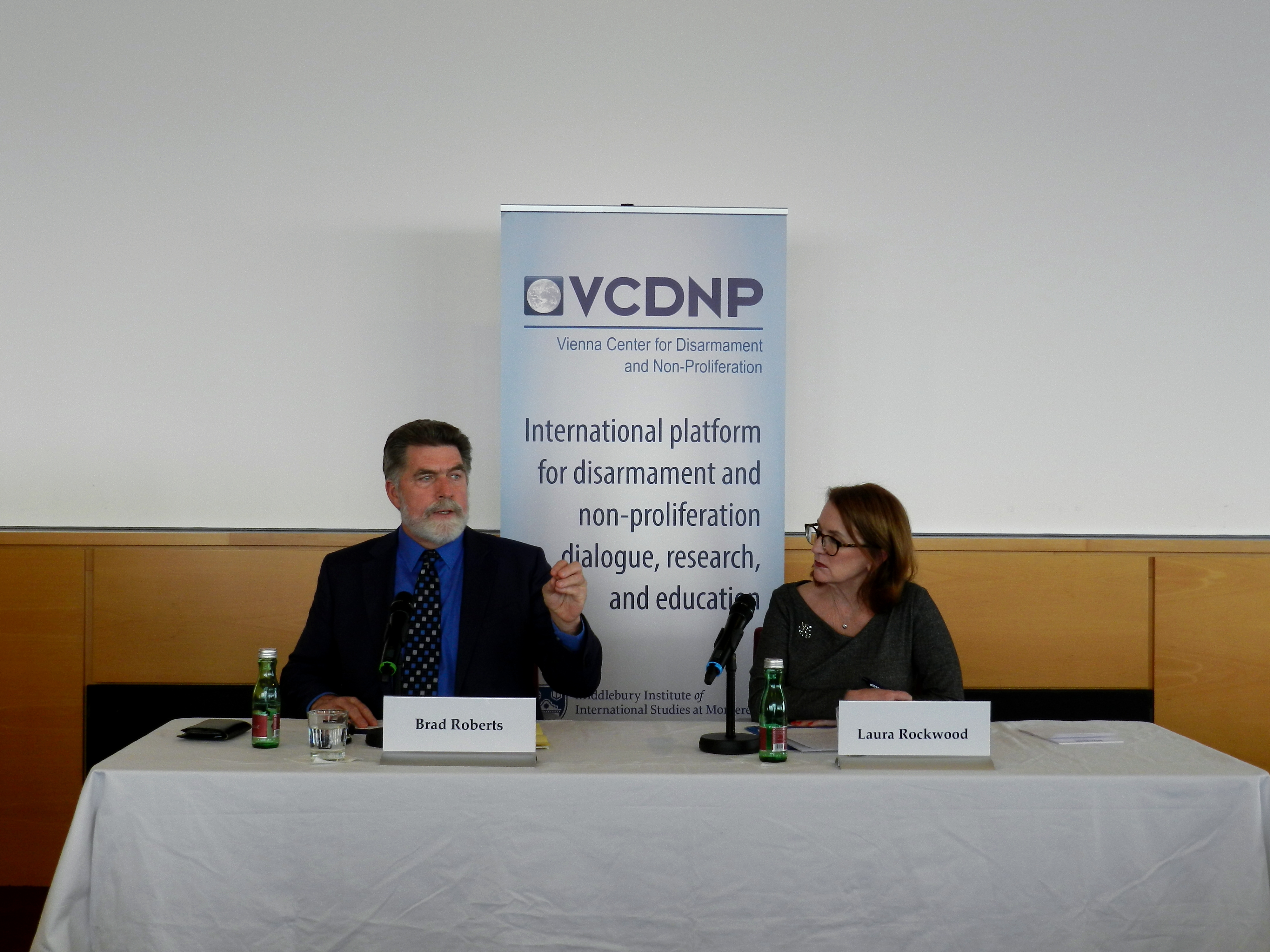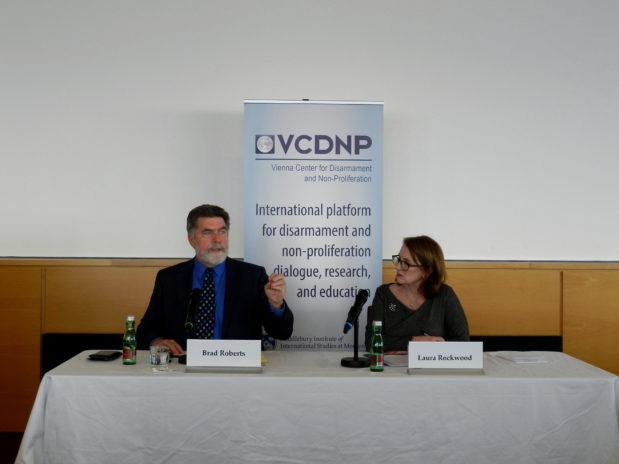
On 27 March 2018, the VCDNP and the U.S. Mission to the International Organizations in Vienna held a seminar by Dr. Brad Roberts, Director for the Center for Global Security Research at Lawrence Livermore National Laboratory. The event attracted over 100 participants from the Vienna-based community and focused on the United States’ nuclear policy and posture since the end of the Cold War to the current Administration. The event, which was held under the Chatham House rule, began with a historical overview of US nuclear policy assessing elements of continuity.

The conclusion of the Cold War led to a series of policy initiatives known as the Presidential Nuclear Initiatives intended to reduce the US and Soviet Union (later Russian) nuclear arsenals. It was not until the Clinton Administration that the Nuclear Posture Review (NPR) process commenced. The first NPR was conducted by the Pentagon, for the Pentagon, as a bottom-up review of US defense policy after the Cold War. The review focused largely on what the U.S. should do with its nuclear forces resulting in a strategy of “lead but hedge”: the U.S. should lead in the reduction of nuclear arsenals and cooperate with partners on threat reduction, but hedge should the nuclear landscape take a turn for the worst.
At the end of 2001, the George W. Bush Administration submitted the second NPR to Congress. The security landscape in 2001 had changed since the first NPR, especially after the 9/11 terrorist attacks. The second NPR differed from its predecessor in its view on relations with Russia and China, moving away from competition and risk of war among powers to a focus on common interest and common values against the so called “axis of evil.” A strategy was outlined to assure U.S. allies, dissuade and deter potential challengers, and deter enemies.
In 2010, the Obama Administration released the third NPR, which focused more on cooperation and multilateralism to address potential risks and threats. The security environment at the time suggested an increased risk of a nuclear weapon detonation by nuclear terrorists or a group outside of the nuclear pathway. It was recognized that this risk could not be minimized unilaterally and that working together was in everyone’s common interest. This thinking led to the Nuclear Security Summit process which commenced in 2010 with the last summit being held in 2016. The 2010 NPR outlined four main aspects: (1) a deeper partnership with Russia and the goal of achieving more reductions in US/Russian nuclear arsenals; (2) a deeper relationship with China and a focus on dialogue and strategic stability; (3) the roll back of the Iranian and North Korean nuclear programmes; and (4) working with US allies to reduce the role of nuclear deterrence and shift reliance to more conventional means. Many of these conditions fell short of their aspirations, which impacted the latest NPR and contributed to an increasingly negative view on global security.
The Trump Administration released its NPR in February 2018, emphasizing that the global security environment continues to be unpredictable and increasingly so. The latest NPR was premised on the existence of an inherently adversarial relationship with Russia, an increased risk posed by North Korea and its advanced nuclear weapons programme, concerns about Iran acquiring a nuclear weapon despite the constraints posed on its nuclear programme by the Joint Comprehensive Plan of Action, the continuing threat of nuclear terrorism and apprehensions about US relations with China. In viewing the current security landscape as more complex, unpredictable and negative, the new NPR emphasizes the role of nuclear weapons to protect US allies and dissuade potential adversaries.
However, the NPRs share a number of common themes regarding emerging threats, including in cyber and outer space. A number of other elements of continuity can be seen among the NPRs as well. For example, the last three NPRs have focused on the need for the United States to have flexible, adaptive and responsive nuclear weapons, especially in light of the uncertainty faced in today’s security environment. Though this option has been maintained throughout the NPRs, it was noted that the United States has not invested in new weapons designs or prototypes to date, although the three NPRs safeguard the right to test such weapons. Though the resumption of US testing was viewed to be unlikely, the consistency of maintaining this option is one that should not be overlooked when reviewing the NPRs. It is important to note the United States’ continued support for the Comprehensive Nuclear-Test-Ban Treaty, as well as its commitment to the Treaty on the Non-Proliferation of Nuclear Weapons and to Article VI on disarmament.
Another key matter of continuity among the various US administrations is the view that the Treaty on the Prohibition of Nuclear Weapons (TPNW) is not helpful in reducing nuclear dangers. An observation was made that a number of gray areas in the TPNW text exist that raise concerns not just among US allies but also for NATO policy and the policies of a number of nations directly impacted by North Korea’s increased nuclear and missile capabilities. The discussion reflected a number of varying views on the TPNW, showing a clear divide among the event’s participants on whether or not the TPNW will positively benefit the non-proliferation regime.
So where does this leave us today? It was suggested that US nuclear policy has experienced two phases and is now transitioning into a third phase. The first phase was the Cold War period. The second phase viewed rogue states as the main concern of potential nuclear deterrence and stressed the importance of nuclear arms control, especially bilateral nuclear arms control between the United States and Russia. The third phase views the North Korean programme with increased uneasiness, and calls into question the role of arms control given the souring relationship between the United States and Russia today. Were our expectations about the role of nuclear weapons wrong after the end of the Cold War? Would a change in super power relations provide a more positive outlook toward the future? The event provided a great deal of food for thought and active engagement by all participants. What comes next? It is difficult to say, but as one participant noted, it could be a long process to create the conditions that would lead the world closer to one without nuclear weapons.